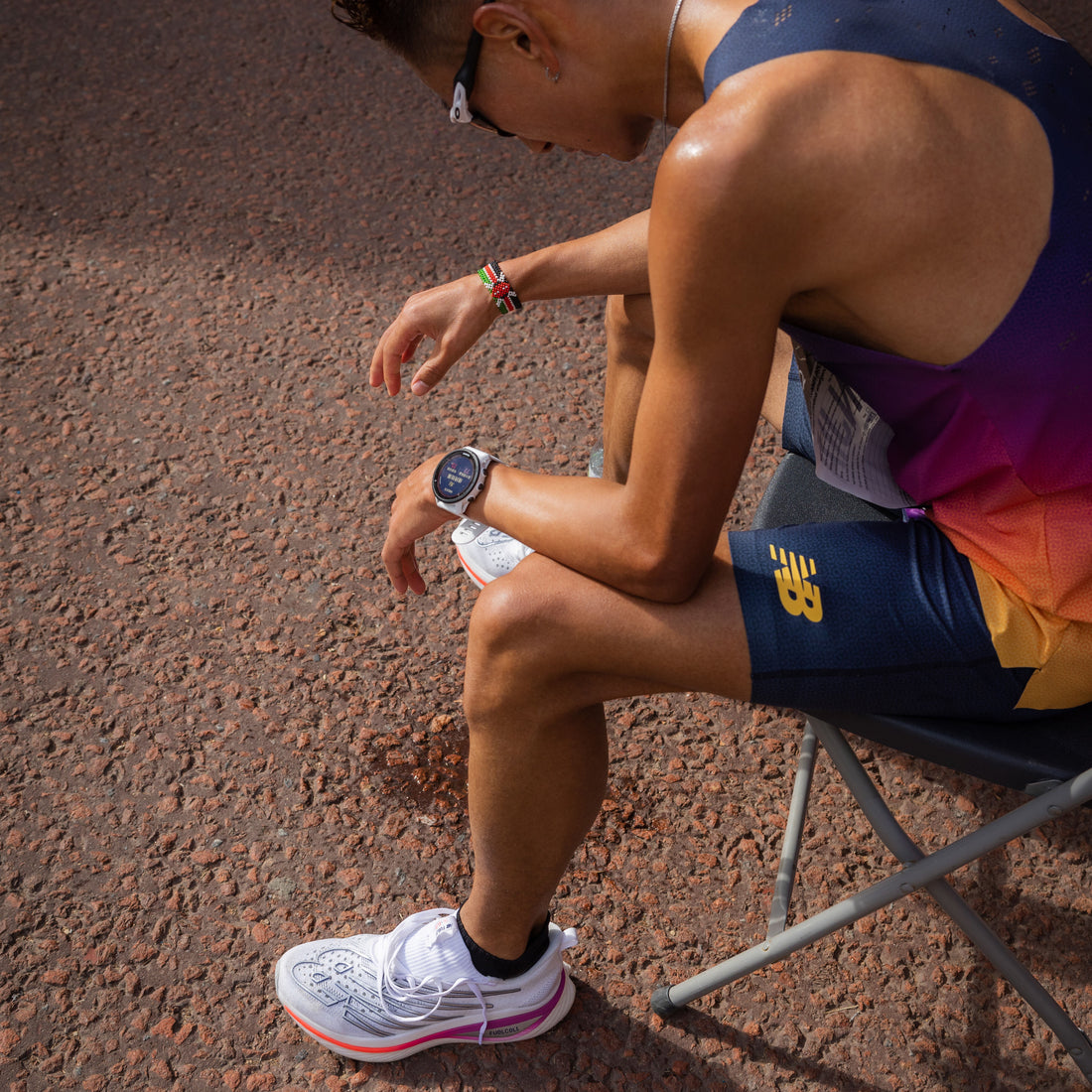
How to track your running progress: Technology and tools
Share
Keeping track of your running progress can be a game-changer in reaching your fitness goals. Technology has made it easier than ever to track performance, monitor progress and adjust your training programs to get the best possible results. Whether you're a beginner looking to improve your overall fitness, or an experienced runner training for a marathon, there are a number of tools and technologies that can help you on your way. In this blog post, we explore how you can use technology and tools to track your running progress and get the most out of your training.
1. Running apps: Your personal training partner
A. Features to look for
Modern running apps offer a wide range of features that can help you track your progress. Look for apps that can record pace, distance, calories burned, heart rate and even GPS tracking. Many apps also allow you to plan and follow training programs, set goals and analyze training data.
B. Popular Choices
- Strava: Known for its accurate GPS tracking and social features. You can follow your friends' activities, participate in challenges, and analyze detailed race data.
- Nike Run Club: Offers a varied selection of training plans, motivation through coaching, and the ability to track pace and distance.
- Garmin Connect: Integrates with Garmin devices to give you comprehensive analysis of your running performance, including heart rate, steps, and pace.
2. GPS Watches: Precision and Convenience
A. Advantages of GPS watches
GPS watches provide accurate measurement of distance, pace and route. They can be particularly useful for monitoring your progression over time and adapting your training program based on detailed data.
B. Selection of watches
- Garmin Forerunner Series: Offers detailed analysis, heart rate monitoring and advanced features to optimize your training.
- Apple Watch: Integrates with healthcare services and provides simple measurements of activity, pace and heart rate, in addition to the possibility of synchronizing with various training apps.
- Polar Vantage Series: Offers precise heart rate measurement and training analytics that can help you better understand your training load.
3. Heart rate belts and sensors: Deeper insight into physical condition
A. Why use pulse belts?
Heart rate belts provide an accurate measurement of your heart rate, which is useful for monitoring the intensity of your workouts and making sure you're training in the right heart rate zone to achieve specific goals.
B. Popular Choices
- Polar H10: Known for its accuracy and comfort. Works well with various fitness apps and watches.
- Wahoo TICKR: Offers both heart rate and calorie measurement and can be easily connected to smartphones and GPS watches.
4. Smart training: Virtual trainers and programs
A. Virtual Trainers
Virtual trainers can provide you with personalized training plans based on your goals and current level. They often provide real-time feedback and motivation during training.
B. Examples of tools
- Zwift: Offers virtual training environments and competitions that can be motivating and engaging, especially on the treadmill.
- RunCoach: Gives you access to personal training plans and analyzes based on your running performance and goals.
5. Analysis tools: Evaluation of progress
A. Analyze your data
Use analytics tools to gain deeper insight into your training data. This can include pace and heart rate variations, performance improvements and general training load.
B. Tools for evaluation
- TrainingPeaks: Provides comprehensive analysis and planning for serious athletes looking to optimize their training program.
- Runalyze: Provides detailed analysis of running data and allows you to evaluate your performance over time.
6. Social sharing and competitions: Increase motivation
A. Participation in challenges
Many running apps and training tools offer opportunities to participate in challenges and competitions. This can be a great way to stay motivated and set new goals.
B. Sharing of Results
Sharing results with friends and family can give you extra motivation. It also provides an opportunity for social interaction and support from other runners.
7. Adjust the training program according to data
A. Adjust according to progress
Use the data you collect to adjust your training program. If you see that you are improving quickly, you can increase the intensity. If you struggle to maintain your pace, you may want to adjust your exercise volume or intensity.
B. Identify patterns
Analyze your race data to identify patterns that may indicate strengths and weaknesses. This can help you tailor your training to improve specific areas.
Summary
Technology provides a variety of tools and resources that can help you track, analyze and improve your running progress. Whether you use a running app, GPS watch, heart rate belt or analyze training data, these tools can provide you with valuable insight and motivation. By integrating these technologies into your training routine, you can gain a better understanding of your physical condition, stay motivated and adapt your training to reach your goals. So, adopt the technology that works best for you and see how it can improve both your performance and your running experience!
